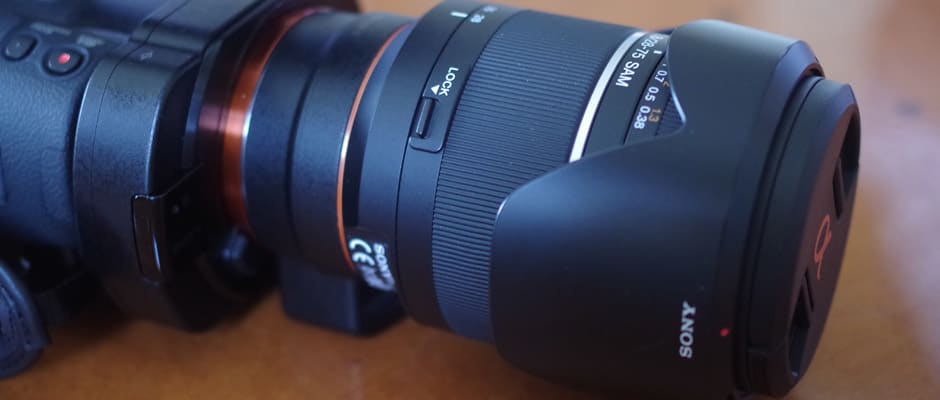Introduction
The NEX-VG900 will be available in November 2012 with an MSRP of $3299 (body only). The camcorder comes with a free A-mount lens adapter (LA-EA3) and was announced in conjunction with Sony's new 18-200mm power zoom lens and the NEX-VG30 interchangeable lens camcorder.
Lens & Imaging System
{{section_header}}{{section.name}}{{/section_header}}

The new Full Frame CMOS sensor on the NEX-VG900 is the big story here. The 23.3-megapixel Full Frame chip on the VG900 means the camcorder has a sensor more than twice the size of the APS HD CMOS found on the NEX-VG20, and roughly 45 times larger than the 1/2.88-inch chip found in Sony's high-end consumer Handycams, like the HDR-PJ710V. It's also the first Sony camcorder to feature a Full Frame image sensor. Clearly, this is a huge deal.
While the image sensor is certainly large enough and has enough pixels to accommodate 4K video recording, the Sony NEX-VG900 only tops out with 1920 x 1080 Full HD recording (just like most HD camcorders). Another caveat is the fact that to take full advantage of the V900's Full Frame imager, you must use A-mount lenses with the provided A-mount lens adapter (LA-EA3 adapter). Using E-mount lenses on the VG900 will result in the camcorder initiating an APS-C crop mode that only uses a portion of the image sensor.
Front
{{section_header}}{{section.name}}{{/section_header}}
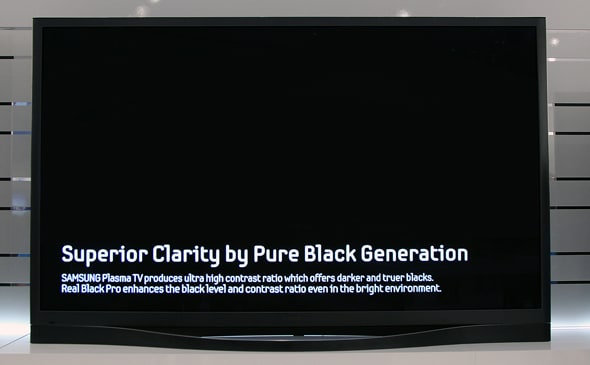
Right
{{section_header}}{{section.name}}{{/section_header}}
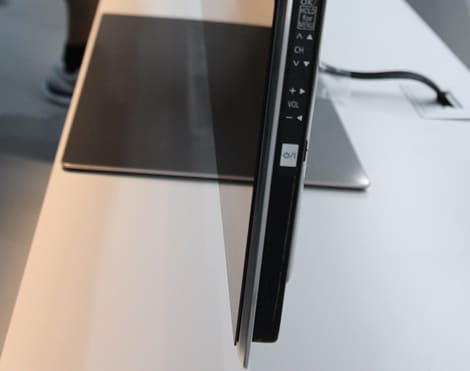
Back
{{section_header}}{{section.name}}{{/section_header}}
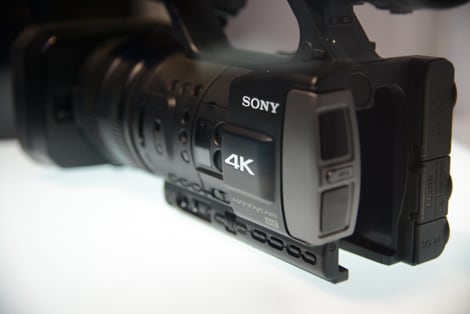
Left
{{section_header}}{{section.name}}{{/section_header}}
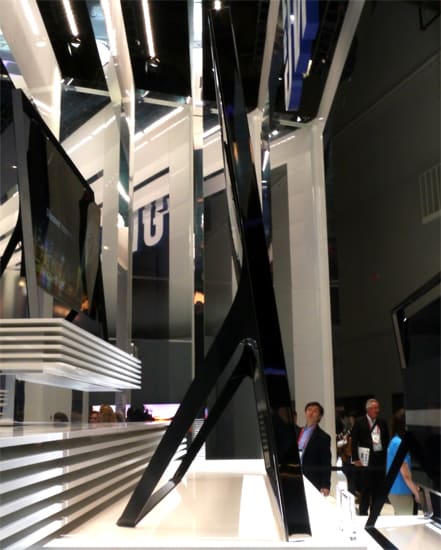
Top
{{section_header}}{{section.name}}{{/section_header}}

Bottom
{{section_header}}{{section.name}}{{/section_header}}
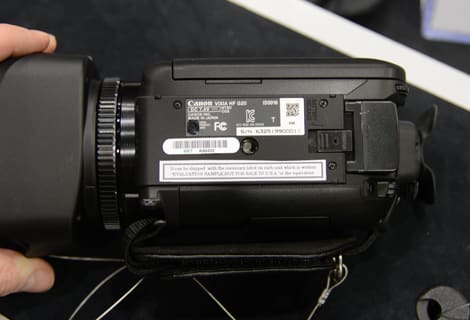
Compression
{{section_header}}{{section.name}}{{/section_header}}
In terms of compression, the NEX-VG900 doesn't bring anything new to Sony's interchangeable lens Handycams. The camcorder offers Full HD recording using a 60p, 60i, or 24p frame rate. The max bitrate for recording is 28Mbps, but that's only possible when using the 1080/60p record mode. Other frame rates top out with 24Mbps bitrates, and lower-quality recording options are also available (including a standard definition option). The AVCHD compression system is used on all of Sony's Handycams, and it may not be the system most professional videographers are used to. Still, AVCHD is getting fairly easy to work with, and most up-to-date editing programs will have no problem dealing with the footage.
Read more about the advantages and disadvantages of different compression types.
Media
{{section_header}}{{section.name}}{{/section_header}}
No internal memory is found on the NEX-VG900, but the camcorder makes use of a traditional SD memory card slot (also fits SDHC and SDXC cards). The card slot also works with Sony's Memory Stick PRO Duo cards, which further expands the media flexibility.
Read more about the advantages and disadvantages of different media types.

Auto Mode
{{section_header}}{{section.name}}{{/section_header}}
Despite it's $3000+ price tag, the NEX-VG900 is still a Sony Handycam. So it has a lot of features that are geared towards the novice videographer in addition to your standard manual controls. Exposure and focus controls can be set to automatic, and we found the autofocus mechanism on the camcorder to be as quick and as accurate as the NEX-VG20 we reviewed earlier this year. This continuous, quiet autofocus system is one of the significant advantages of the VG900 over Full Frame video-DSLRs like the Canon 5D Mark III or the Nikon D800. Video controls, both auto and manual, are at the forefront on the NEX-VG900 (it is a camcorder, after all). So, unlike video-DSLRs, you don't have to wade through the hundreds of still image settings to find the video function your looking for.

Zoom
Focus
{{section_header}}{{section.name}}{{/section_header}}
Manual focus, of course, is available on the NEX-VG900, but the quality of the focus depends on the lens you have attached. You make use of the focus ring on the attached lens to manually focus, and a dedicated button lives on the left side of the camcorder to switch between manual and automatic focus. As we said previously, the autofocus on the VG900 is one of the camcorder's best attributes (with the kit lens). The focus was quick, quiet, and more precise than the systems we've seen from competitors.
Exposure
{{section_header}}{{section.name}}{{/section_header}}
For adjusting exposure, the VG900 has three dedicated buttons for iris/aperture control, shutter speed, and gain/ISO. These buttons existed on the NEX-VG20 as well, but Sony smartly moved them outside of the LCD cavity. This makes them available to users without having to open the LCD panel.

Something Sony didn't fix, however, is the lowly adjustment dial on the left side of the camcorder that is used to make exposure changes. This dial isn't that large, so using it to make fine adjustments doesn't allow you to get precise control. Again, as with focus, the exposure controls available to you on the NEX-VG900 depend on the lens you have attached. Some lenses won't work with auto exposure (especially if you're using an old lens with an adapter), and some will require you to change the aperture by rotating the aperture ring on the lens itself. This isn't an issue with any of Sony's E-mount lenses, though.
For gain/ISO control, we'd like to see a set of switches that give you the option of programming three different gain settings than can be changed on the fly. This is the kind of thing you see on pro camcorders, and videographers will often set the switches to three different levels: one with little to no gain (for bright, outdoor light), one with some gain (for medium low light or mixed light), and one with a significant gain boost (for low light situations).
Other Manual Controls
{{section_header}}{{section.name}}{{/section_header}}
Sony talked about some new picture effects on the NEX-VG900, but we doubt that's the kind of thing that will win too many people over. We didn't actually get to see a list of the new effects, but hopefully it includes options that aren't basic digital effects that you could easily add in post. It's also safe to assume the VG900 is loaded with all the controls and features that are present on the NEX-VG20 camcorder, which you can read more about here. Inside the LCD cavity area are dedicated buttons for zebra patterns, peaking, white balance presets, and auto exposure controls. More controls are found in the menu system.

Handling
{{section_header}}{{section.name}}{{/section_header}}
In the basic sense, the NEX-VG900 handles very similarly to the NEX-VG20. The size and shape of the two camcorders are similar, but the few alterations made by Sony should make the VG900 easier for handheld use. Moving the dedicated manual control buttons outside of the LCD cavity was a very good decision, and it should please those who prefer to utilize the electronic viewfinder (rather than the LCD) when they shoot video.
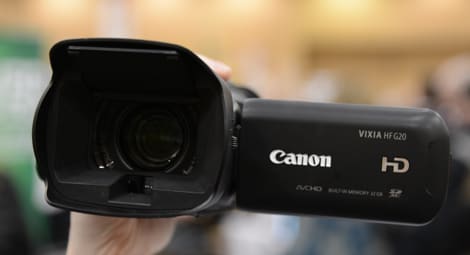
Then there's the simple addition of a zoom toggle on the NEX-VG900, which is also a new feature on the updated NEX-VG30. This new feature improves the handling of the VG900 drastically, but it only helps if you're using Sony's new power zoom lens with a built-in zoom motor. The 18-200mm power zoom lens is available as a kit with the VG900, and when attached it functions no differently than that of a built-in zoom lens on a traditional Handycam. The six different zoom speeds available on the camcorder give you more control and more options over the way you can zoom with the VG900.

The main design alteration for the NEX-VG900 comes under the hood—the Full Frame image sensor. To accommodate the larger sensor, the VG900 does have some extra bulk over the VG20. It also comes with an A-mount lens adapter (LA-EA3), which enables the camcorder to use far more lenses right out of the box. It also means you're going to have more bulk on the VG900 if you want to take advantage of the Full Frame sensor (only A-mount lenses, with the adapter, allow for full coverage).

Stabilization
{{section_header}}{{section.name}}{{/section_header}}
The NEX-VG900 doesn't have stabilization on the camcorder itself, but Sony offers many lenses with built-in stabilization (including the kit lens). Stabilization can still be turned on and off via the camcorder's menu system, but, again, this menu option will not work unless a compatible lens is attached to the camcorder.
Battery
{{section_header}}{{section.name}}{{/section_header}}

LCD & Viewfinder
{{section_header}}{{section.name}}{{/section_header}}
The NEX-VG900 has the same touchscreen LCD as the NEX-VG20. It may bother some users that the camcorder comes with a touch interface, but the NEX-VG900 has enough dedicated buttons that you only need to venture into the touchscreen to access more unconventional controls and options. Still, the touchscreen will certainly frustrate some users.

Unlike the LCD, the viewfinder on the NEX-VG900 is improved over the EVF on the NEX-VG20. The new electronic viewfinder is an XGE OLED Tru-Finder, which should make it a lot easier to adjust controls like focus and exposure precisely. The placement of manual control buttons outside of the LCD cavity also means you don't have to have the LCD panel open to get quick access to exposure controls.


Audio Features
{{section_header}}{{section.name}}{{/section_header}}
The fancy built-in microphone on the VG900 isn't any different than the Quad Capsule Spatial Array stereo mic found on the NEX-VG20. The camcorder also still includes audio level control and audio level displays for the built-in microphone, as well as a 3.5mm mic jack on the side of the handlebar.
The NEX-VG900 will be compatible with Sony's new XLR mic kit, however, which is something that was not offered with the NEX-VG20. The XLR kit uses the VG900's multi-interface shoe to connect to the camcorder and allow for balanced audio via dual XLR inputs. This kit is also available for the Sony Alpha A99 Full Frame DSLR announced at the same time as the VG900.

Connectivity
Still Features
Conclusion
The Sony Handycam NEX-VG900 is an impressive feat of technology and design, but the camcorder itself raises more questions than answers. Since the NEX-VG900 is limited to 1920 x 1080 recording, how much will the Full Frame sensor, with its whopping 24 megapixels, actually improve video quality? Is this model simply a stepping stone to a 4K Handycam in the future—something that would take full advantage of the Full Frame sensor?
What about record modes and AVCHD compression? Are pros and enthusiasts who shell out $3299 for a camcorder going to be satisfied with a 28Mbps bitrate? We heard similar complaints about Canon's new AVCHD-recording EOS C100 Cinema Camera announced a few weeks ago.
We liked the NEX-VG20 a lot when we reviewed it earlier this year, and we applaud Sony for making intelligent design changes with the new NEX-VG900 (and on the NEX-VG30, which was announced in conjunction with the VG900). The addition of a zoom rocker that works with the kit power zoom lens, as well as the repositioning of dedicated manual control buttons are smart, easy fixes that make the NEX-VG900 handle better for videographers. Hopefully next on Sony's list will be to improve the crummy control wheel used to make exposure adjustments.
Despite all the question marks, the NEX-VG900 is still an exciting achievement for Sony. The larger sensor should have an impact on sensitivity, noise, and depth of field control—three aspects of video that are very important to professionals. Due to its lack of 4K recording capability, we're unsure if the NEX-VG900 will win that many people over. But it's $3299 price tag (body only) is certainly competitive compared to other interchangeable lens camcorders. Our guess (and hope) is that Sony will continue to put an emphasis on its NEX Handycams, and we won't be surprised if a 4K version is on the horizon.
Photo Gallery
{{photo_gallery "FI Lens Image", "FI Front Image", "FI Right Image", "FI Back Image", "FI Left Image", "FI Left Open Image", "FI Top Image", "FI Bottom Image", "FI Media Image", "FI Easy Mode Image", "FI Zoom Image", "FI Zoom Image 2", "FI 3D Lens Image", "FI 3D Lens Image 2", "FI 3D Physical Controls", "FI 3D Physical Controls 2", "FI Handling Image", "FI Handling Image 2", "FI Handling Image 3", "FI Battery Image", "FI LCD Image", "FI Viewfinder Image", "FI Viewfinder Image 2", "FI Playback Image", "FI Mic Image", "FI Flash Image", "FI Photo Mode Image", "FI Ports Image 1", "FI Ports Image 2", "FI Ports Image 3", "FI Ports Image 4", "FI Ports Image 5", "FI Ports Image 6"}}
Meet the tester
Jeremy is the video expert of our imaging team and Reviewed.com's head of video production. Originally from Pennsylvania and upstate NY, he graduated from Bard college with a degree in film and electronic media. He has been living and working in New England since 2005.
Checking our work.
Our team is here for one purpose: to help you buy the best stuff and love what you own. Our writers, editors, and lab technicians obsess over the products we cover to make sure you're confident and satisfied. Have a different opinion about something we recommend? Email us and we'll compare notes.
Shoot us an email
